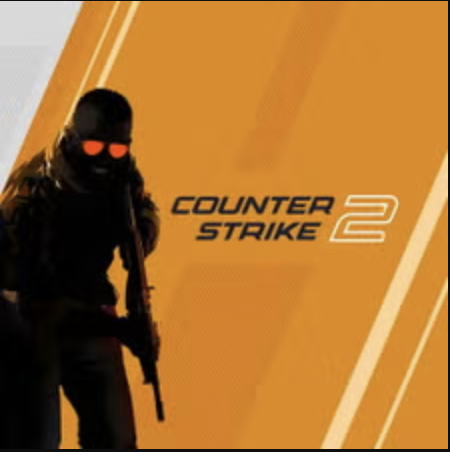Invisible Walls and Clunky Exploration: Why Borderlands 4’s Open World Is Drawing Ire
Popular Now
 Counter-Strike 2
Counter-Strike 2
 Among Us
Among Us
 Brawl Stars
Brawl Stars
 Auto X Drift Racing 3
Auto X Drift Racing 3
 Minecraft
Minecraft
 The Legend of Zelda
The Legend of Zelda
 Call of Duty
Call of Duty
 Free Fire Max
Free Fire Max
 League of Legends
League of Legends
 Valorant
Valorant
 The highly-anticipated release of Borderlands 4 has been met with a mix of praise and criticism, with one of the most significant points of contention being its new open-world design. While the shift from the series’ traditional hub-and-spoke map structure to a seamless open world has been touted as a major innovation, a growing number of players are voicing their frustration over what they call “lazily slapped invisible walls” and inconsistent level design that actively undermines the game’s new, expanded movement mechanics. This issue has led to a divisive community reaction, with players questioning the developers’ commitment to a truly open and explorable experience.
The highly-anticipated release of Borderlands 4 has been met with a mix of praise and criticism, with one of the most significant points of contention being its new open-world design. While the shift from the series’ traditional hub-and-spoke map structure to a seamless open world has been touted as a major innovation, a growing number of players are voicing their frustration over what they call “lazily slapped invisible walls” and inconsistent level design that actively undermines the game’s new, expanded movement mechanics. This issue has led to a divisive community reaction, with players questioning the developers’ commitment to a truly open and explorable experience.
For the first time in the franchise’s history, Borderlands 4 allows players to traverse a vast, uninterrupted map on the planet Kairos. To facilitate this, developer Gearbox Software introduced a host of new traversal abilities, including a grapple hook, a glider, a double-jump, and an on-demand summonable vehicle. These additions were met with excitement, as they promised a newfound sense of freedom and verticality in exploration. However, the reality of the game’s world has proven to be a letdown for many. The supposed “open” world is, in practice, littered with invisible barriers and oddly-angled surfaces that prevent players from climbing, gliding, or simply walking in what would otherwise appear to be a viable path. This has led to countless moments of frustration, as players hit a non-visible wall after a long glide or a multi-jump climb, only to be forced to take the intended, linear route. This design choice feels antithetical to the very spirit of an open-world game, especially one that promotes player freedom and exploration.
 The Disconnect Between Movement and Map Design
The Disconnect Between Movement and Map Design
The core of the problem lies in the disconnect between the game’s advanced movement system and its restrictive level design. Players are given all the tools to explore every nook and cranny of the world, but the world itself is designed with rigid, invisible boundaries. This is in stark contrast to other modern open-world games, such as The Legend of Zelda: Breath of the Wild or Elden Ring, which are designed with natural and visible barriers—like sheer cliffs or deep bodies of water—that clearly delineate explorable areas. A common sentiment among players is that the level designers “gave us mobility tools then lazily slapped invisible walls everywhere instead of properly designing obstacles.” This criticism points to a rushed or underdeveloped approach to a core feature of the game.
On forums like Reddit and social media, players have shared numerous anecdotes of trying to take a creative shortcut, only to be met with an invisible wall. The frustration is palpable, as these encounters undermine the promise of a truly open experience. For a series that has always prided itself on its over-the-top, chaotic fun, this kind of frustrating and “artificial” design feels out of place. While the seamless open world eliminates loading screens and keeps the action flowing, the invisible walls create a different kind of immersion-breaking friction. This issue, combined with other reported problems like performance issues and a clunky UI, has led some players to express disappointment with the overall polish of the game at launch. This is a significant point of contention for a game that was widely praised in early reviews for its new open-world philosophy. However, those reviews also noted that the “troubling terrain with a few too many invisible walls” could hamper the experience.
A Problem at the Core of the Game
The issue of invisible walls is not a simple bug that can be patched out in a quick hotfix. It is a fundamental part of the game’s level design. It would require a significant overhaul of the world’s geometry to remove or replace these invisible barriers with natural-looking obstacles. For this reason, many in the community believe that this is a flaw they will have to live with. Some players have even taken to Randy Pitchford’s advice, who has publicly stated that players who are not happy with the game should refund it. While this is a bold and arguably unhelpful response, it highlights the severity of the issue from a developer standpoint. For the first time, a core design choice in a Borderlands game is not being celebrated but is being actively complained about.
While many players are enjoying the new movement mechanics and the overall gameplay, the frustration over the world’s design is a significant blemish on an otherwise well-received title. It serves as a powerful reminder that in the world of game development, giving players new tools for freedom is only half the battle. The world they use those tools in must be designed to accommodate them, or the result is a jarring and disappointing experience. The conversation surrounding Borderlands 4‘s open world is a prime example of a game that has taken a major swing and, in the eyes of many players, has only partially connected with its target.
The hope remains that Gearbox will find a way to address these issues, but for now, the aether of Kairos is filled with the frustrated cries of players bouncing off an invisible wall after a perfectly executed grapple.









